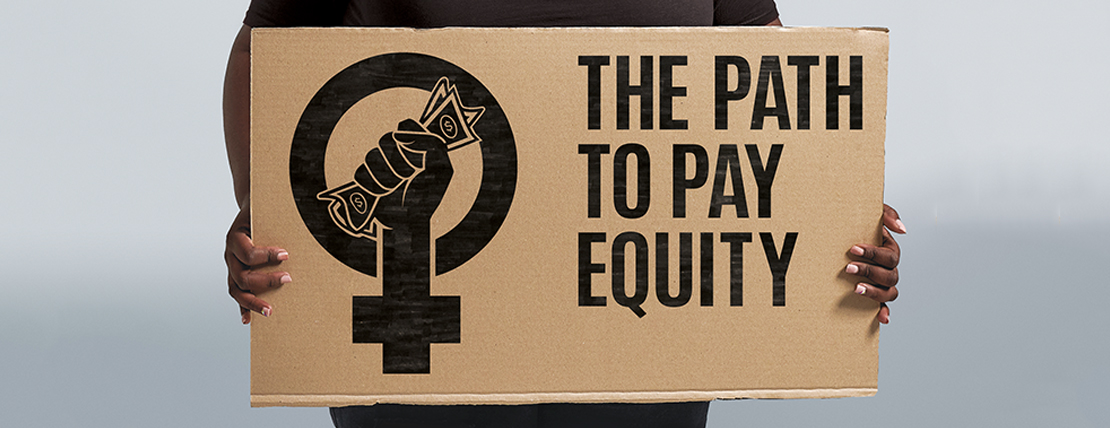Pay equity is complicated.
There are many factors — education, experience, qualifications, working conditions, for example — that go into determining fair and consistent compensation.
But whatever variables enter into the equation, it’s clear that pay inequity is still very much a problem.
Consider, for example, a Pew Research Center analysis revealing that women earned 84 cents for every dollar that men earned in 2020.
A Payscale survey suggests the gap has gotten even worse in 2021, with women making 82 cents to every dollar a man makes this year.
And wage inequity is not just a gender issue. On average, Black men are paid 71 cents for every dollar that White men make, according to EPI, which finds Black women making 63% of the pay that White men are taking home.
Whether it’s the gap between men and women or the disparity between races, what do we do to make it disappear for good? #evolve asked a few compensation experts to share their thoughts on why the nagging issue of pay inequity persists, and what needs to happen to make fair pay a reality in the American workplace.
Long Time Coming
The Equal Pay Act was signed in 1963, ostensibly to wipe out gender-based wage disparity. It’s fair to say that progress on this front has been painfully slow in the nearly seven decades since.
For example, the real median earnings of women have fallen short of men’s earnings by an estimated $700,000 to $2 million throughout the past 40 years, according to the National Committee on Pay Equity, which estimates that women won’t achieve pay equity until 2059.
As discouraging as these kinds of statistics might be, there might also be reason to think that we’re heading in a positive direction.
“I think that most organizations understand and accept the need for pay equity, so we have a victory there,” said Brad Hill, principal at Clearwater Human Capital.
“However, many of these same organizations aren’t clever enough to figure out how to achieve pay equity on a 3% merit increase budget, and it never seems to be the right time to pony up additional funds to remedy the inequities.
“Pay equity has a cost associated with it,” Hill continued. “And until organizations — and owners/shareholders — are willing to put their money where their mouth is, inequities will be around for years to come.”
That cost remains “the biggest factor” driving pay inequity, he said.
“Where does the money come from to adjust inequities? There are many competing objectives vying for a limited pool of annual pay increase dollars — paying a living wage, providing cost of living increases, paying at market, paying for performance, addressing pay inequities.”
Brian Levine, leader of Mercer’s pay equity practice, agrees that most companies are aware of wage disparities and the need to correct them. He also sees “frustration” within many companies that have been trying to address pay equity issues.
"Pay equity has a cost associated with it … and until organizations — and owners/shareholders — are willing to put their money where their mouth is, inequities will be around for years to come.”
“One reason for that frustration is unconscious bias and the way it plays out when making managers’ discretion part of determining compensation,” said Levine.
“Discretion is not a negative, generally. It’s generally helpful. You want to give managers some discretion as to how to reward employees. But where you have discretion, you have unconscious bias creeping in.”
Organizations “have to be relentless” in evaluating their own progress toward pay equity, said Levine, adding that companies should look at pay equity each year as part of their review of the organization’s compensation practices.
The Foundation for Fair Pay
Yes, much progress remains to be made on the path to pay equity. But there are also signs that companies are taking measures such as pay equity analyses to address the issue.
For instance, recent WorldatWork research finds 45% of more than 200 companies saying they have taken action within the last 12 months to deal with compensation inequities in their organization. Close to 30% said the same regarding employee benefits.
The largest number of those organizations taking steps to eliminate pay disparities (87%) said they have performed a pay equity audit/analysis in that 12-month timeframe, with another 67% indicating their company has made pay equity adjustments and developed remediation strategies in that same span.
These are important steps that organizations should be taking. But the first step might be clearing up some misconceptions about what pay equity actually means, said Myrna Hellerman, senior vice president and Midwest regional leader at Segal.
“There is still this idea that pay equity is really pay equality — equal work for equal pay. That’s not it,” said Hellerman, who advises companies’ leadership and boards in the design and implementation of people and rewards strategies.
“Pay equity is about setting up an approach within an organization, or on a broader scale, to ensure there’s impartiality, to ensure that the process for making compensation decisions is fair and unbiased.”
Hellerman cited a number of “key pay deci- sion-making moments” that can contribute to inequities, such as policies regarding the setting of starting salaries, promotions and job changes, and performance and salary adjustment policies.
Imbalances in the application of these policies and practices, she said, can lead to representation gaps — more women and/or minorities in lower-paid roles and lower promotion rates for women and/or minorities, for example.
"As compensation decisions happen in decentralized organizations, or in large organizations where there’s discretion involved in pay decisions, you have to have checks and balances … that’s really critical.”
HR and rewards professionals “need to get beyond just the numbers and successful outcome to a multiple regression pay equity analysis,” Hellerman said. “They need to leverage their pay equity analyses to examine their organization’s equity opportunity cycle and the potential for inadvertent bias in pay decision making.”
Levine urges organizations to conduct training designed to eliminate such bias and deliver it “at the point when managers are making these critical decisions. That doesn’t necessarily mean a full training program, but a simple refresher around the time that managers are making these compensation decisions would be helpful.”
“As compensation decisions happen in decentralized organizations, or in large organizations where there’s discretion involved in pay decisions, you have to have checks and balances,” he said. “That’s really critical.”
Ultimately, owners and shareholders must be convinced that pay equity is the foundation for fair pay in order for significant progress to occur, added Hill.
“[Pay equity] needs to be prioritized above pay for performance and paying market,” he said. “Until organizations remedy the pay sins of the past, they cannot effectively recognize the correct pay levels in the future.”
The perils of unfair pay practices
Just generally speaking, paying employees fairly and impartially is the right thing to do.
From a strictly legal standpoint, failing to do so can be pretty expensive for the organization.
“Litigation [involving claims of unfair pay practices] can be and often is expensive, in terms of both time and money,” said Joy Chin, a principal in the Long Island, N.Y. office of Jackson Lewis, and a co-leader of the firm’s pay equity group.
Even if a claim has no merit, or is ultimately settled or resolved, the organization will have to spend time and resources to investigate. “And if a claim goes to trial, it will take even more time and resources,” said Chin, who is also a member of Jackson Lewis’s board of directors, co-leader of the firm’s affirmative action, Office of Federal Contractor Compliance Programs (OFCCP) and government contract compliance group.
Damage to the organization’s brand and reputation is potentially just as costly.
“Equal pay continues to be headline news. It’s a topic that everyone relates to, and one that generates discussion and debate,” Chin said. “An employer faced with equal pay complaints — even if those complaints are ultimately unfounded — might find itself in the headlines.”
Likewise, an employer’s ability to attract and retain talent may be affected by its pay practices.
“It’s human nature for people to associate compensation with a measure of their worth. Employees who feel they’re being treated fairly and equitably feel valued and thus invested in the company’s success. Employers who have made [news] because of pay complaints or don’t have a reputation of being invested in their employees may find themselves having trouble attracting and retaining talent.”
If complaints about wage disparity do arise, the organization’s “visceral reaction” may be to deny that it engages in unfair pay practices. Chin advises against that.
“An employer should listen to what the employee has to say without reacting. It will avoid proffering explanations that may not be borne out after an investigation. It is important that the employee feels like he or she has been heard and that the company is taking the claim seriously. It also allows the company an opportunity to learn as much as possible from the employee about the basis for the claim. Ask for all information they may have to support their claim.”
An investigation must then be conducted, including an evaluation of the underlying facts as well as the company’s pay data, she said. “This part is critical and will likely require a pay analysis.”
Wage inequity issues can often “sneak up on an employer,” Chin said.
“Most employers believe their pay system and process is fair, and it likely is, on its surface. However, the best way to identify unexplained differences in pay is to conduct a pay analysis. This will help the company better evaluate claims.
“Regardless of the results of the investigation, follow up with the employee,” she concluded. “Treat them with respect and make sure you are able to explain your position, including with documentation as appropriate.”




